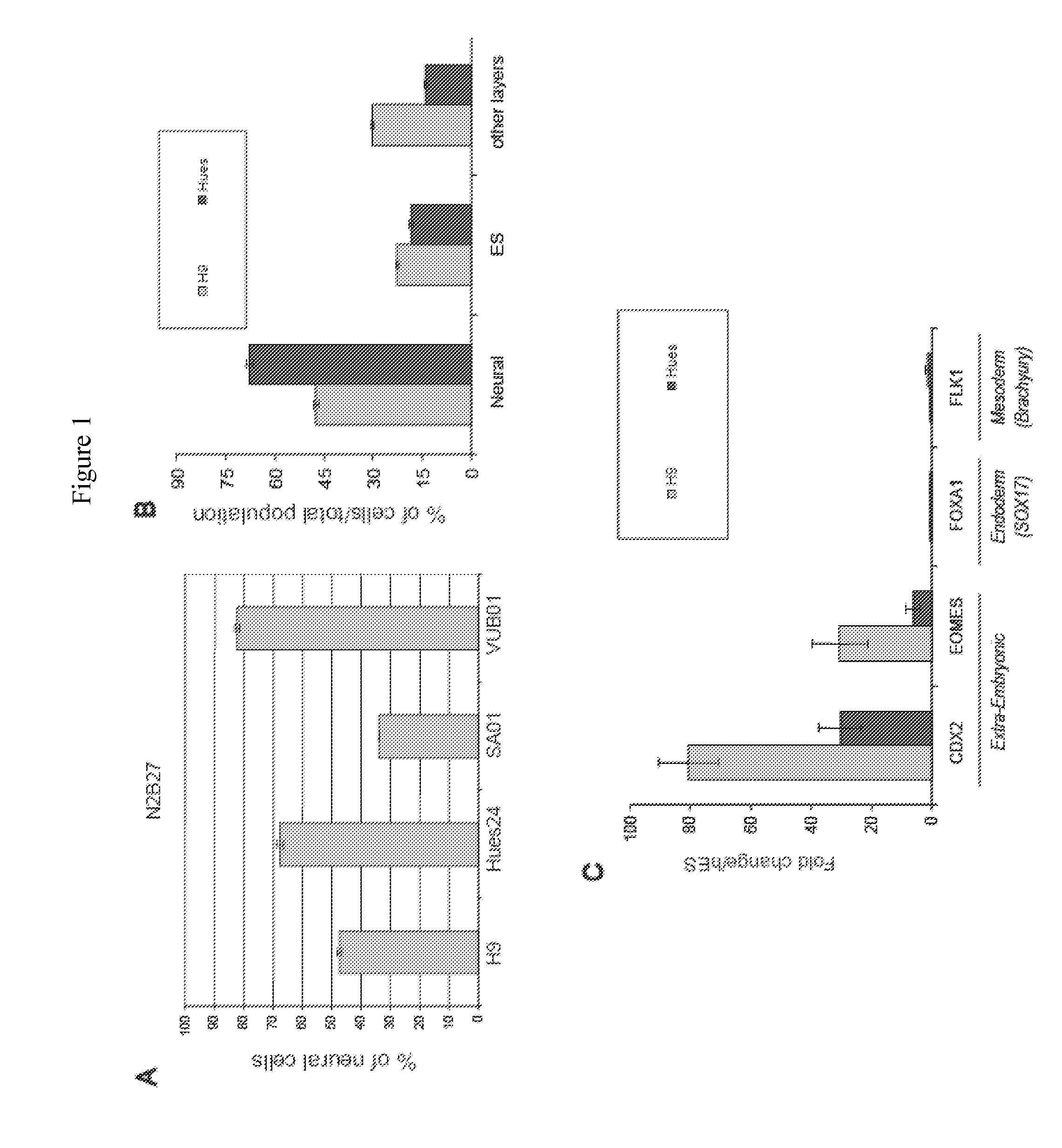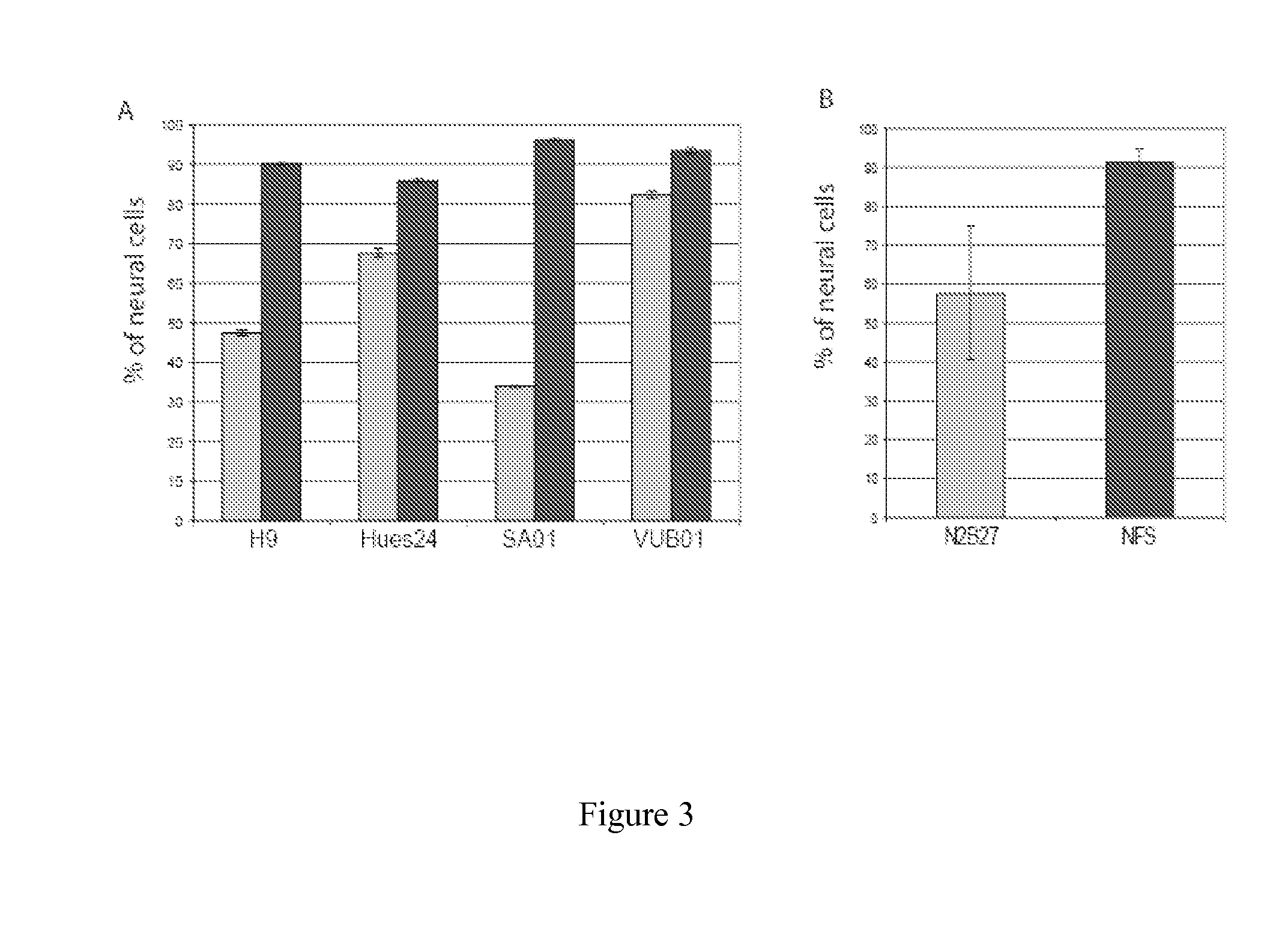Method and Medium for Neural Differentiation of Pluripotent Cells
a pluripotent cell and neural differentiation technology, applied in the field of synchronous neural differentiation of pluripotent cells, can solve the problems of inability to meet current neural induction protocols, heterogeneous cell population, poor reproducibility, slow to obtain, etc., and achieve the effect of improving the quality of li
- Summary
- Abstract
- Description
- Claims
- Application Information
AI Technical Summary
Benefits of technology
Problems solved by technology
Method used
Image
Examples
example
Material and Methods
Media and Cytokines
[0102]N2B27 medium was described in Ying et al., 2003. N2B27 was a mixture of DMEM-F12 / Neurobasal 1:1, N2 supplement)(1:100°), B27 supplement)(1:50°) both obtained from Invitrogen. NFS was composed of N2B27, Noggin (range of concentration between 200 ng and 500 ng / ml, from RD Systems or Preprotech.), SB431542 (between 10 and 20 μM, from Tocris), 5 ng / ml FGF2 (Preprotech.). Rock inhibitor Y27632 was from Calbiochem, EGF and BDNF were from RD systems.
[0103]Human ES Cell Culture
[0104]Human ES cells (Hues 24, XY, and H9, XX, WiCell Research Institute) were maintained on a layer of inactivated mouse fibroblasts (STO line from ATCC). The hES cells were cultured in DMEM / F12 / Glutamax supplemented with 20% knockout serum replacement (KSR), 1 mM nonessential amino acids, 0.55 mM 2-mercaptoethanol, and 10 ng / ml recombinant human FGF2 (all from Invitrogen). Cultures were fed daily and manually passaged every 5-7 days. The cells were used between passages 4...
PUM
| Property | Measurement | Unit |
|---|---|---|
| concentration | aaaaa | aaaaa |
| concentration | aaaaa | aaaaa |
| concentration | aaaaa | aaaaa |
Abstract
Description
Claims
Application Information
 Login to View More
Login to View More - R&D
- Intellectual Property
- Life Sciences
- Materials
- Tech Scout
- Unparalleled Data Quality
- Higher Quality Content
- 60% Fewer Hallucinations
Browse by: Latest US Patents, China's latest patents, Technical Efficacy Thesaurus, Application Domain, Technology Topic, Popular Technical Reports.
© 2025 PatSnap. All rights reserved.Legal|Privacy policy|Modern Slavery Act Transparency Statement|Sitemap|About US| Contact US: help@patsnap.com



